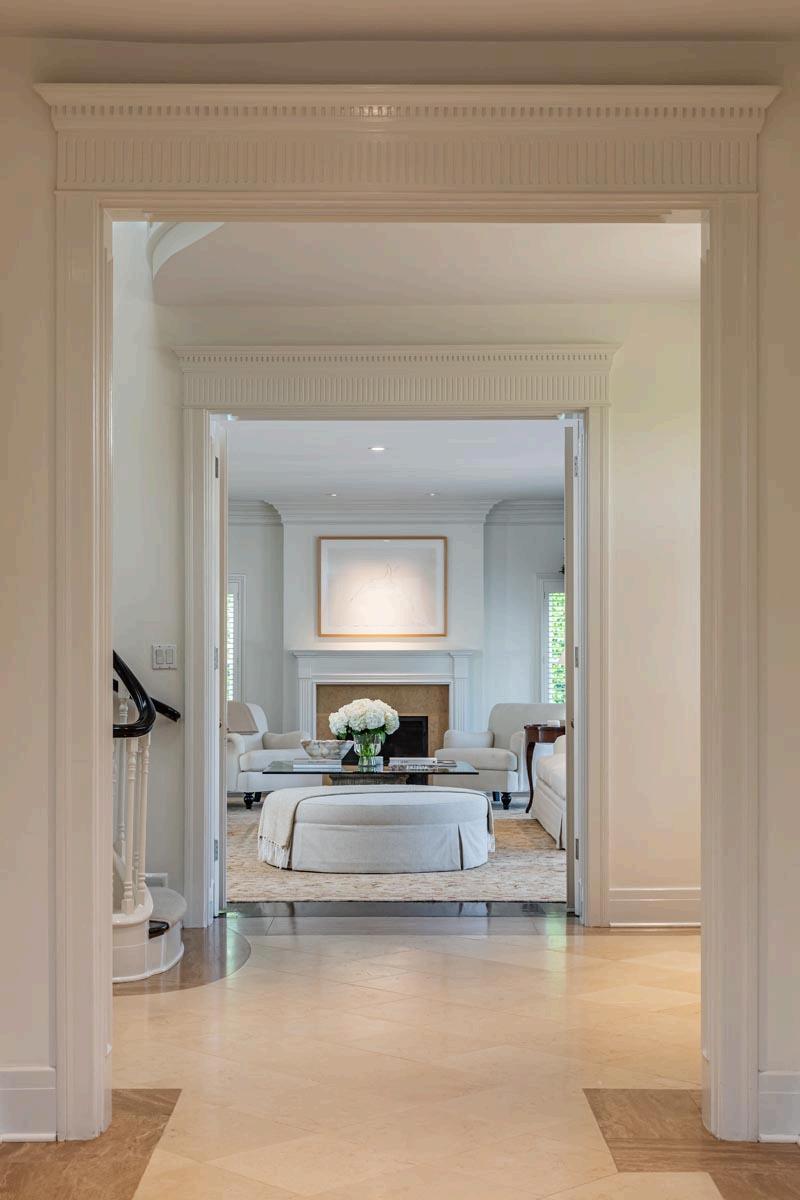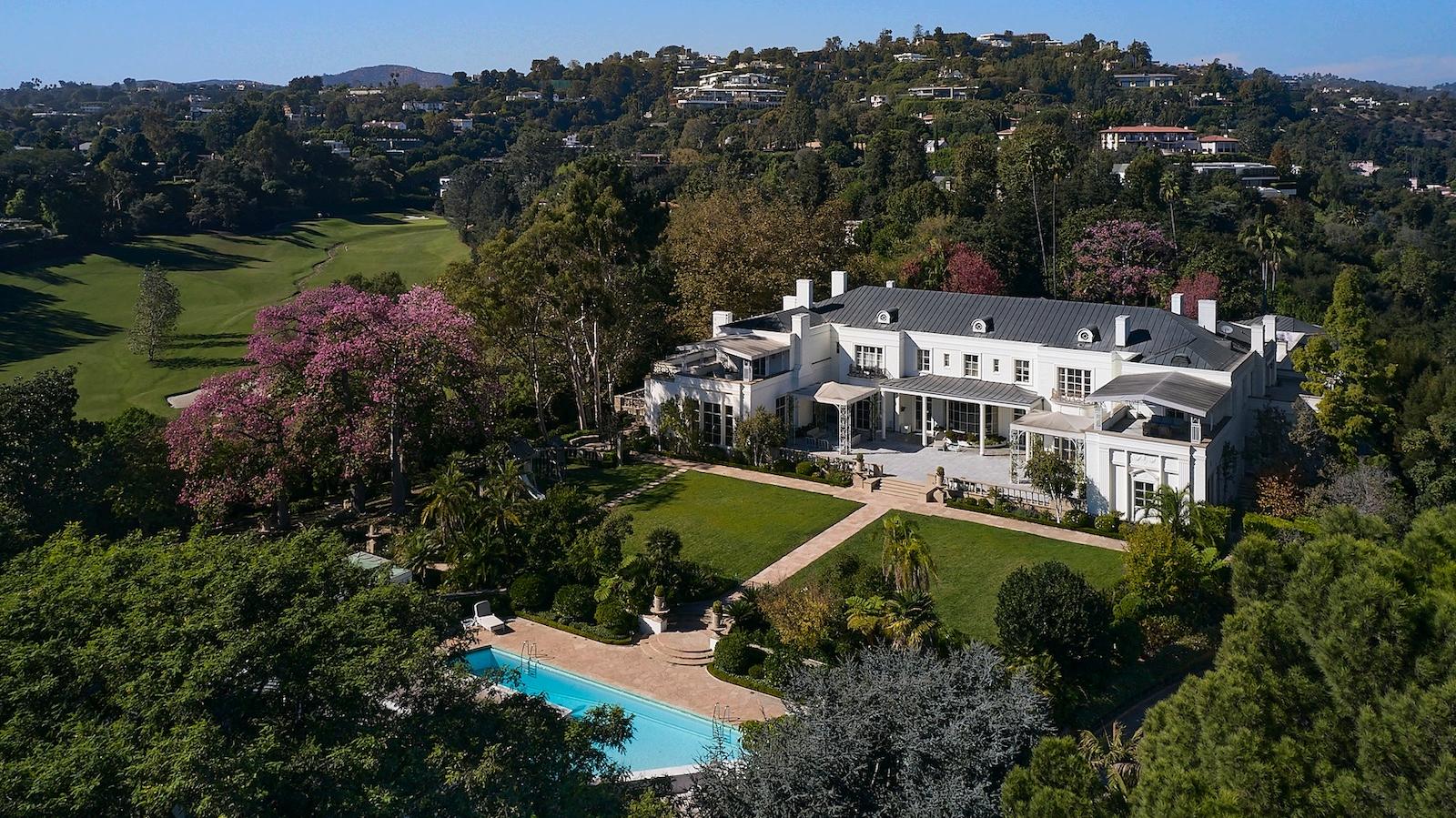ICONIC ISSUE THE

From Historic Estates to Modern Masterpieces



From Historic Estates to Modern Masterpieces

Los Angeles, with its diverse landscapes and innovative spirit, has long been a canvas for architectural mastery, where timeless design meets cultural significance. From the opulent estates of Bel Air to the mid-century modern marvels of Holmby Hills, the city’s hills, canyons, and cityscapes host homes that stand as living legacies of visionary architects. In this issue, we spotlight five exceptional properties that embody the artistry, history, and grandeur of Los Angeles’ architectural landscape, showcasing a unique blend of classic styles, historical significance, and cutting-edge design.

Few architects have left as profound a mark as Paul Revere Williams, famously known as the “Architect to the Stars.” Blending elegance with functionality, Williams redefined luxury with a timeless style that continues to captivate. The iconic estate at 620 N Beverly Drive is a quintessential example of his genius, showcasing his signature balance of classical grandeur and modern sophistication.
Nestled in one of Beverly Hills’ most prestigious neighborhoods, this masterpiece exudes both comfort and opulence. From soaring ceilings and intricate moldings to the stunning interplay of light, every detail reflects Williams’ talent for making the grand feel inviting.
As a trailblazing Black architect in the 20th century, Williams broke barriers while reshaping Los Angeles' architectural landscape. The estate at 620 N Beverly Drive stands as a testament to his enduring influence and unparalleled ability to craft homes that are both graceful and innovative.

Casa Encantada, completed in 1937, is a shining example of Hollywood Regency architecture a sophisticated blend of Art Deco elegance and neoclassical grandeur. Designed by renowned architect James E. Dolena and exquisitely decorated by T.H. RobsjohnGibbings, this Bel-Air estate epitomizes the opulence of Hollywood's Golden Age.
Perched on an 8-acre ridge with sweeping views, the property is as captivating today as it was in its prime. Its stately design features bold geometric patterns, sleek Deco lines, and meticulously landscaped gardens, all of which evoke the splendor of early Los Angeles.
From the grand driveways to its ornamental details, Casa Encantada embodies a cinematic allure, merging old-world charm with timeless luxury. A symbol of refinement for nearly a century, it continues to enchant admirers as one of Los Angeles' most iconic architectural masterpieces, preserving the glamour of a bygone era.

Designed in the 1930s by Sumner Spaulding, the Chartwell Estate stands as one of the finest examples of French château-style architecture in the United States. Nestled on 10 sprawling acres along Bel Air Road, the estate was originally commissioned by Sir John “Jock” Whitney, a prominent businessman and philanthropist. Its limestone façade, formal gardens, and symmetrical proportions embody old-world grandeur, making it a pinnacle of classical design. Chartwell's lavish interiors boast crystal chandeliers, grand staircases, and intricate detailing, offering a glimpse into a bygone era of opulence. The estate's towering turrets and ornate stonework create a sense of timeless elegance, seamlessly blending architectural artistry with unparalleled luxury.
Immortalized as the setting for The Beverly Hillbillies, Chartwell has transcended its role as a private residence to become a cultural and architectural landmark. In 2019, it set a record for the highest residential sale in U.S. history, selling for an extraordinary $150 million. This historic estate remains a symbol of refinement and prestige, cementing its legacy as one of Los Angeles’ most iconic properties.

No discussion of Los Angeles architecture is complete without the Playboy Mansion an iconic estate that has captivated the public imagination for decades. Designed by architect Arthur R. Kelly in 1927, this Gothic Revival masterpiece stands in striking contrast to the modernist trends of its era, blending old-world charm with bold eccentricity.
Set on nearly five acres of land, the mansion is a stunning blend of grandeur and mystique. Its soaring turrets, vaulted ceilings, and expansive gardens create an atmosphere of both opulence and intrigue. Inside, the sprawling 20,000-square-foot interior exudes an air of lavish indulgence, with intricate woodwork and classic design elements that echo the mansion's storied past.
The mansion’s legendary pool grotto, complete with a cave, remains one of its most famous features. Over the years, it has served as the backdrop to countless Hollywood gatherings, glamorous parties, and memorable moments of revelry. Beyond its celebrity associations, the Playboy Mansion is a lasting symbol of the extravagant lifestyle it embodies.
More than just a residence, the mansion has become a defining architectural artifact of Los Angeles. As both a cultural and historical landmark, it represents a bygone era of grandeur, luxury, and indulgence, leaving an indelible mark on the city’s architectural legacy.

Designed by the renowned A. Quincy Jones in 1954, The Brody House stands as a timeless example of mid-century modern architecture, embodying the essence of California modernism. Created for art collectors Sidney and Frances Brody, this Holmby Hills residence showcases Jones's mastery in blending form and function, with an open-plan design, expansive floor-to-ceiling windows, and a seamless connection between indoor and outdoor spaces.
The Brody House is more than just a home it is a living testament to Jones’s philosophy of architectural harmony with nature. Surrounded by lush, thoughtfully curated landscaping, the design prioritizes natural light, airy spaces, and a fluid connection to the environment, inviting the outdoors in at every turn.
With its clean lines, minimalist decor, and use of natural materials, the house exemplifies the ideals of mid-century modernism, where simplicity and elegance converge. As a key figure in Los Angeles' postwar architectural renaissance, A. Quincy Jones’s work on The Brody House remains a pivotal contribution to the city's design legacy. Revered for its innovative design and enduring beauty, the Brody House continues to captivate and inspire as one of the most iconic residences of its time.
Los Angeles is a city that has long been defined by its architecture homes that not only reflect the tastes and sensibilities of their time but also tell the story of the city itself. From the timeless elegance of Paul Williams’ designs to the cinematic allure of Casa Encantada, from the grandeur of Chartwell Estate to the Gothic Revival of the Playboy Mansion, and the modernist genius of A. Quincy Jones, these iconic properties continue to shape the landscape of Los Angeles.
Each home tells a story, and together, they represent a living history of architectural evolution in one of the most dynamic cities in the world. The legacy of these iconic designs ensures that Los Angeles will remain a global center for architectural innovation and luxury living for generations to come.
